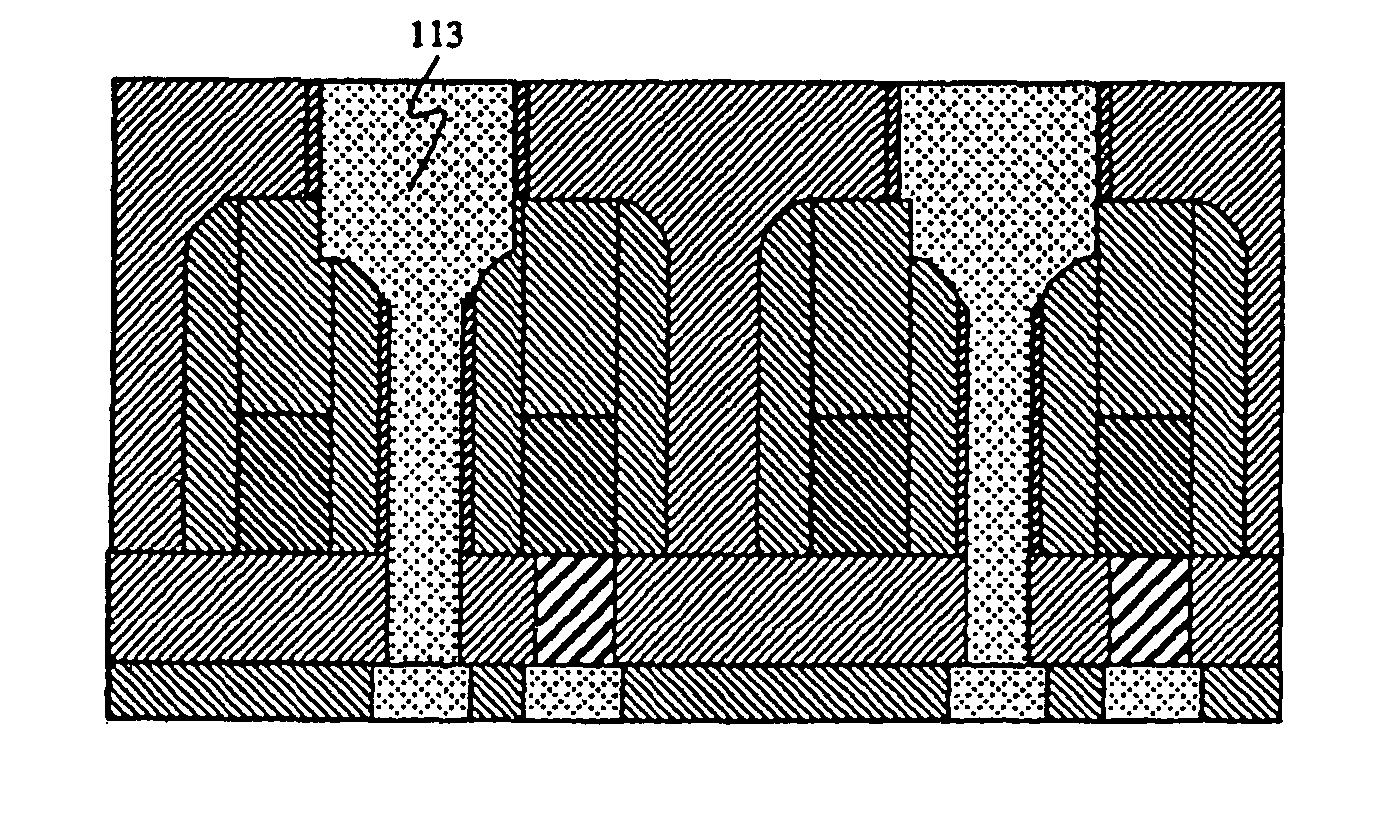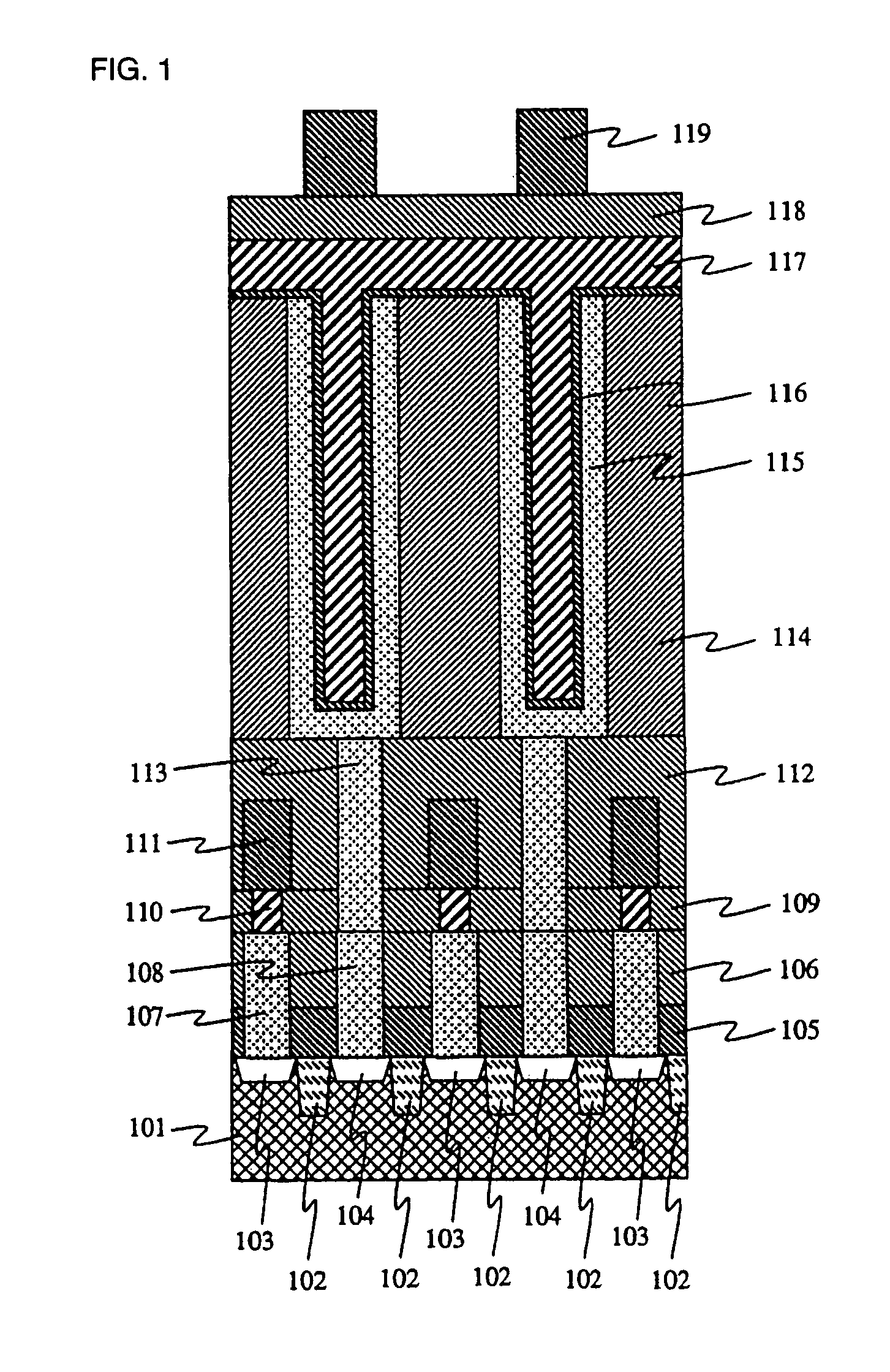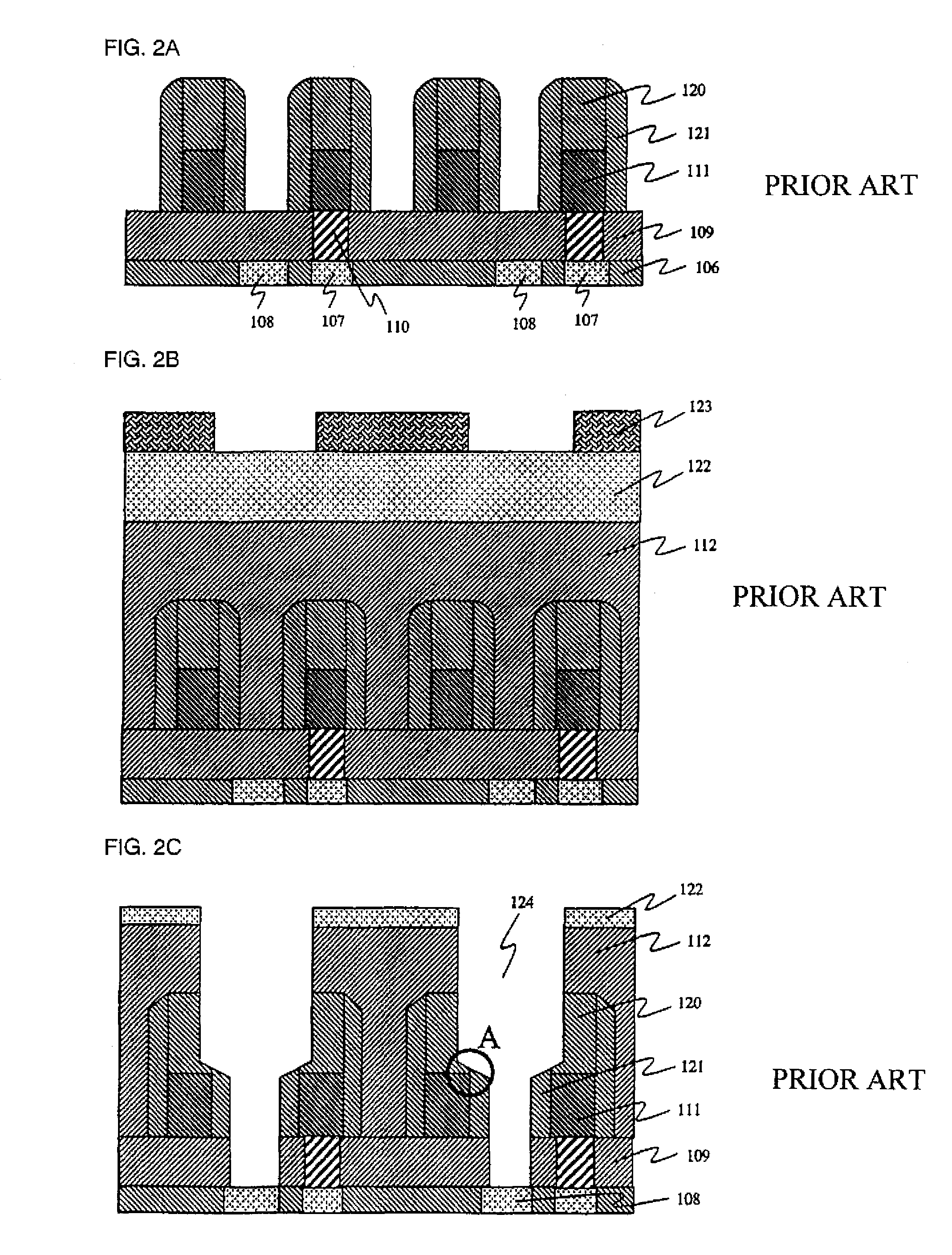Method of manufacturing semiconductor device
a manufacturing method and semiconductor technology, applied in the direction of semiconductor devices, basic electric elements, electrical equipment, etc., can solve the problems of increasing the difficulty of capacitance contact plug formation, reducing the area allowed for each component element, and increasing the difficulty of forming each of the above-described contact plugs
- Summary
- Abstract
- Description
- Claims
- Application Information
AI Technical Summary
Benefits of technology
Problems solved by technology
Method used
Image
Examples
embodiment 1
[0028]First, a description will be given of the first embodiment of the present invention, in which amorphous carbon is used for a sacrificial interlayer film which forms a contact hole, by using the sectional views of a series of steps shown in FIGS. 3A to 3K. Incidentally, the steps until the formation of a first interconnect layer which forms a word line are omitted.
[0029]First, as shown in FIG. 3A, first contact plugs 107 and 108, which are made of polycrystalline silicon, were formed in a prescribed region of a first interlayer insulating film 106 made of silicon oxide, a second interlayer film 109 which consists of a silicon oxide film having a thickness of 150 nm was formed on top of the first contact plugs, and a second contact plug, which becomes a bit line contact plug, was formed in a prescribed region of the second interlayer insulating film. The bit line contact plug can be formed by burying titanium nitride and tungsten by use of the CVD (Chemical Vapor Deposition) met...
embodiment 2
[0042]In the above-described first embodiment, after the formation of the contact hole in the amorphous carbon film and in the second interlayer insulating film, the third contact plug which consists of a silicon film was formed. Because the amorphous carbon film is formed by the plasma CVD method, the step coverage becomes a little worse. For example, if the amorphous carbon film is formed so as to cover the bit lines which are densely arranged, it is impossible completely bury the spacing between adjacent bit lines, whereby the occurrence of voids is feared. If the voids occur, the silicon film is formed in the voids and this may give rise to the problem that the adjacent contact plugs form a short circuit.
[0043]In this second embodiment, a description will be given of a method by which after the formation of the first contact hole in the amorphous carbon film, side walls of the first contact hole are coated with an insulating film, and even if voids occur in the amorphous carbon ...
PUM
 Login to View More
Login to View More Abstract
Description
Claims
Application Information
 Login to View More
Login to View More - R&D
- Intellectual Property
- Life Sciences
- Materials
- Tech Scout
- Unparalleled Data Quality
- Higher Quality Content
- 60% Fewer Hallucinations
Browse by: Latest US Patents, China's latest patents, Technical Efficacy Thesaurus, Application Domain, Technology Topic, Popular Technical Reports.
© 2025 PatSnap. All rights reserved.Legal|Privacy policy|Modern Slavery Act Transparency Statement|Sitemap|About US| Contact US: help@patsnap.com



